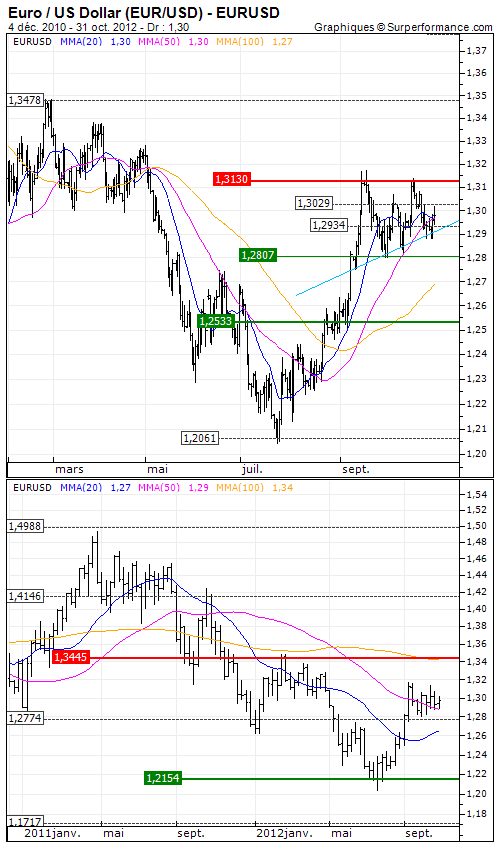Euro / US Dollar (EUR/USD) : US investors are back!
By Mathieu Burbau
In Europe, the Euro has both perfectly welcomed the positive news while maintaining a certain firmness in response to bad news. The sharp contraction in private sector activity in the Eurozone, the further decline in the IFO in Germany, the Spanish unemployment and degradation of BNP by Standard and Poor's have been accepted. In addition, lower than expected contraction of GDP Spanish and a well Italian medium/long term bond auction have restored balm to the heart to investors.
Mariano Rajoy, the Spanish Prime Minister, prevents Euro acceleration repeating a request for aid package is "not indispensable". Investors are also watching Greece where, without agreement on a new aid before the Eurogroup meeting of November, the country's coffers will be empty on 16 November.
Graphically, Euro bounces perfectly on its short-term trendline, opening the way for a return to 1.3130. If volatility is expected to increase with the come back of U.S. investors on the market on October 31, the limited potential may however encourage some investors to stay away from the parity EUR/USD.




